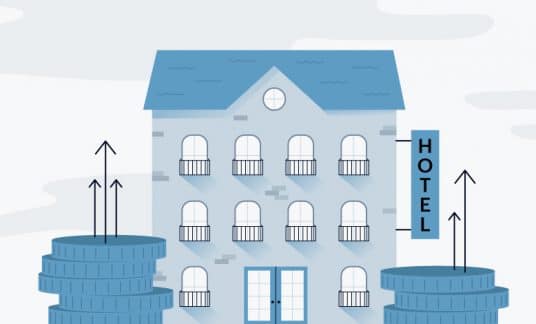A CDFI loan is a business financing option provided by a community development financial institution (CDFI). This kind of financing is provided to entrepreneurs and business owners who are part of underbanked and underserved communities.
Some small business owners obtain financing through crowdfunding, by borrowing money from family and friends or even by using their own personal savings or cash reserves. While many small businesses can obtain financing from a financial institution or from investors, entrepreneurs from underserved communities often face barriers to financing.
If you can’t obtain a business loan from conventional sources, consider applying for a CDFI loan if you are part of an underserved community. These types of loans tend to have high approval ratings, but only for businesses that qualify.
What Is a CDFI?
A CDFI is a private financial institution that is devoted to providing responsible banking and lending services to underserved and disadvantaged communities. The mission of a CDFI is typically to accommodate people who would otherwise be unable to access conventional financing programs.
CDFIs play a crucial role in helping struggling communities obtain banking services, develop financial literacy skills and gain access to affordable housing. CDFIs also loan funds to new businesses, as long as those businesses are part of an underserved community or have a mission to serve an underserved community.
If you’re a member of a low-income community, a minority community or an otherwise underserved community, you may face challenges obtaining a loan to fund your business. Most lenders will want to do a thorough investigation of your business and your finances to determine if you’re a good investment. Larger sums, such as those in excess of $1 million, are particularly difficult to obtain.
-
Survey Says
According to the 2019 Small Business Credit Survey put out by the Federal Reserve, 47% of funding applicants received the full amount of financing they sought in 2018.
The study notes “financing shortfalls were particularly pronounced among firms with weak credit profiles, unprofitable firms, younger firms, and firms in urban areas.” The study also states “funding gaps were most acute for firms seeking $100 – $250K.”
To provide businesses that are young, are in urban areas and have weak credit profiles easier access to funding, Congress passed the Riegle Community Development Banking and Financial Institutions Act of 1994 to create the Community Development Financial Institutions Fund, a government agency that provides funding to CDFIs.
There are a few types of CDFIs:
1. Community Development Banks and Bank Holding Companies
Community development banks provide underserved, unbanked, underbanked and low- and moderate-income communities with retail banking services and credit opportunities. They also provide loans to small businesses, hospitals, schools and other institutions that serve the public.
Most community development banks establish a long-term goal of developing the community around them through safe and responsible lending, microfinancing and venture capital funding. To become a certified CDFI, community development banks must apply to the CDFI Fund.
-
Take Note
Some community development banks aren’t certified by the CDFI Fund.
However, they may still be considered community development banks because of their support for local economic opportunities or their support of an underserved community.
For example, banks owned by and serving designated minority communities that are economically disadvantaged may fit into this category.
A community development bank holding company is simply a company that acts as a repository for multiple community development banks. They may not engage directly in banking services, but they can still be certified by the CDFI Fund based on the banks in their portfolio.
2. Community Development Credit Unions
Similar to a community development bank, a community development credit union (CDCU) is a credit union that has a mission to serve low- and moderate-income communities, minority communities as well as underserved, unbanked and underbanked communities.
The key differences between community development banks and community development credit unions lie in their business models. While even community development banks are for-profit enterprises, community development credit unions, as with other credit unions, are nonprofit financial institutions. Instead of being owned by shareholders, credit unions are owned by their members.
CDCUs specialize in providing retail banking services and a safe place for people in their communities to build assets. They also help to conduct transactions and provide loans to small businesses.
3. Community Development Loan Funds
Community development loan funds (CDLFs) are typically nonprofit funds that are governed in-part by community representatives. They provide financing services to individuals, businesses, and organizations in low-income communities. Unlike community development banks and credit unions, these funds do not provide retail banking services.
According to the Community Action Partnership, there are 4 types of CDLFs. These include:
- Microenterprise Loan Funds
- Small Business Loan Funds
- Housing Loan Funds
- Community Service Organization Loan Funds
Each type of loan fund is designed to serve specific types of clients. For example, a microenterprise is a business operating on a very small scale, such a business run by a sole proprietor. A microenterprise loan fund may be able to provide a sole proprietor in a low-income community with financing to build a small business if they don’t require much seed money.

Types of CDFI Business Loans
There are multiple types of CDFI business loans, and the types you have access to will depend on which type of CDFI you approach for financing.
For example, some community development banks may not be willing to provide microloans for an at-home business, but a community development loan fund might.
Here are 2 CDFI business loans you should be aware of:
Small Business Administration Loans
CDFIs certified by the Department of the Treasury that don’t have a federal financial regulator may participate in the Small Business Administration’s (SBA) Community Advantage loan program, which offers a streamlined application process for SBA 7(a) loans up to $250,000.
An SBA 7(a) loan is backed in part by the SBA, which lowers the risk of the loan for the lender. The SBA also can limit the interest rates applied to these loans, which makes them an inexpensive financing option for businesses in underserved communities.
Business Installment Loans
Business installment loans are perhaps the most familiar to borrowers, and they’re the type of loan you’re most likely to obtain from a CDFI.
A business installment loan provides you with a lump sum of money, then you pay back the loan — plus interest — in installments over a fixed period. If you’re in the market for a microloan, you’ll likely apply for a CDFI business installment loan.
The Benefits of a CDFI Loan
Because they are designed to serve low-income communities, CDFI loans come with benefits to borrowers that conventional loans don’t, including:
- Providing economic opportunities for underserved people and communities struggling to obtain financing.
- Lower interest rates than typical loans. This is to encourage people from low-income communities to obtain the financing they need to build a business.
- CDFI loans usually come with simple terms and conditions. Unlike loans from large banks, you typically don’t have to worry about hidden fees or rate changes that could lead to a dramatic increase in debt.
Because CDFIs have a mission to serve the community, they may also offer business assistance services for individuals who take out a loan. This may come in the form of training and technical programs or even free mentoring programs.
One of the key benefits is of a CDFI loan is that you have a higher chance of approval if you meet the requirements.
Obtaining a CDFI Loan
Despite the many benefits they provide, CDFI loans aren’t for everyone, nor are they available from any financial institution.
To receive CDFI status from the government, financial institutions must have a primary mission that promotes the economic development of an underserved community. Business owners can typically only qualify for a CDFI loan if they are part of an underserved community, but eligibility requirements vary by institution.











